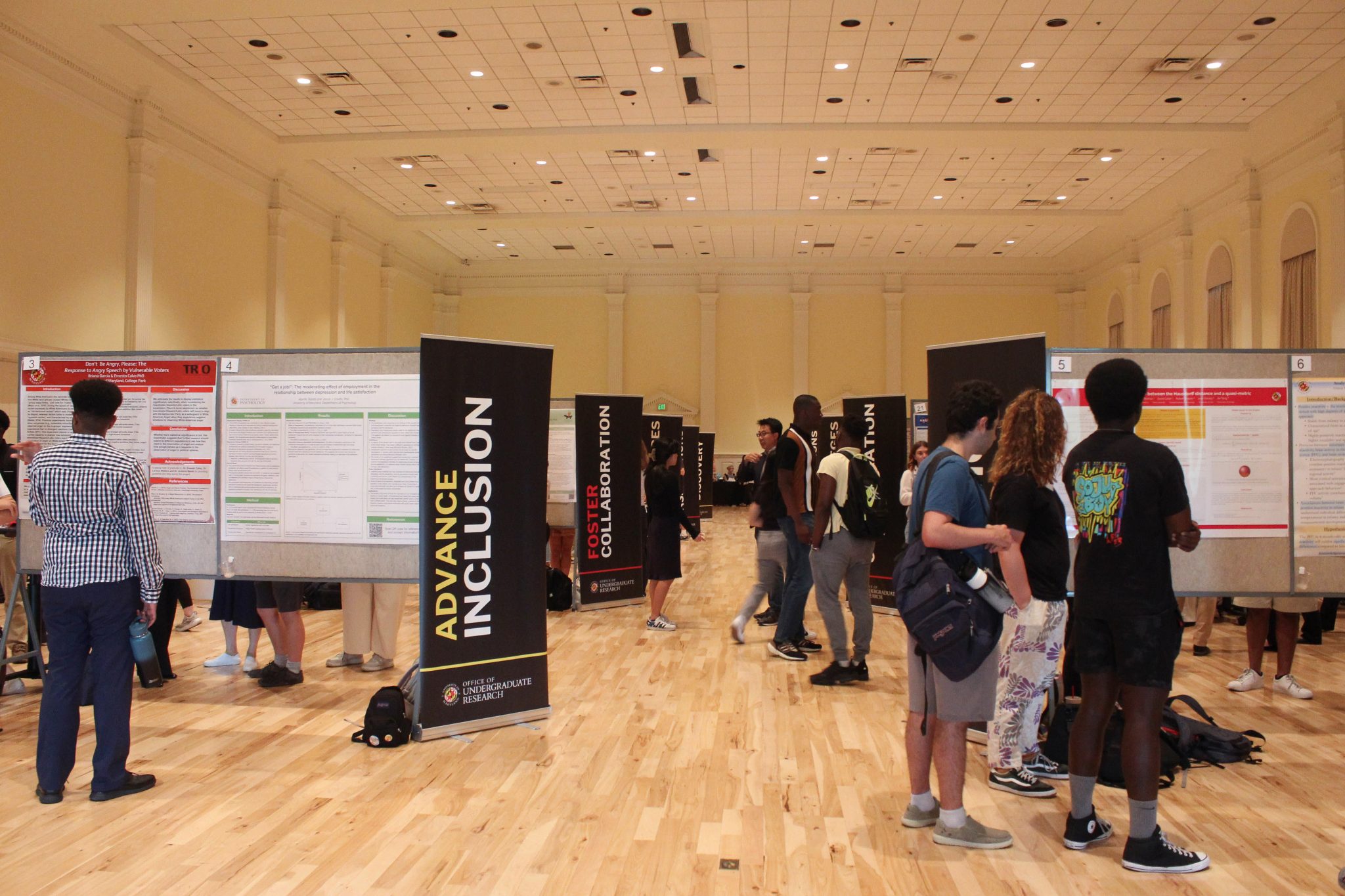About 170 University of Maryland students presented their research Friday at this university’s first annual Summer Undergraduate Research Conference held in Stamp Student Union.
The conference was organized by this university’s undergraduate research office, which was launched last year to provide students with more research opportunities, according to Patrick/Patricia Killion — the office’s director.
Research is incredibly important to students, Killion said. It can help transform a student’s experience on campus by increasing their confidence and connection with their major, they added.
“Research is obviously thought provoking,” Killion said. “It’s engaging. It’s challenging. You’re forced to build relationships … [and] solve hard problems.”
The undergraduate research office aims to reduce barriers preventing undergraduate students from engaging in research on campus, Killion said, especially because the space is perceived as dominated by graduate students, post-doctorates and faculty.
Samuel Heintz, a sophomore aerospace engineering major who presented at the event, said he took advantage of mechanical resources available at this university, such as tools and learned from his lab colleagues during his research process.
[College Park Academy students engineer lacrosse stick for 10-year-old with cerebral palsy]
“I’m surrounded by grad students and undergrads,” Heintz said. “It’s really nice having a knowledgeable and supportive base and people that I can draw from and collaborate with.”
The projects spanned a range of fields, including psychology, robotics and biology.
Ariana Chalkias, a senior neuroscience major, presented her research, which investigates a potential correlation between an infant’s happiness and the size of “social areas” of their brain, including the prefrontal cortex, Friday.
Chalkias quantified an infant’s happiness by watching videos of them playing peekaboo with their mother and rating their perceived happiness, she said. She then conducted MRI scans on the babies’ brains to determine the size of the “social areas” of the brain.
Through her research, Chalkias said she has been able to build new connections, which has been especially helpful for her graduate school applications.
“One of the best things for research … has been the community and the amount of connections I’ve been able to make due to me being in the lab,” Chalkias said. “I have a whole community of people to help me, especially through applying to grad school, which is the hardest thing that I’ve found.”
Larissa Zacharias, a senior public health science major, presented her research about alternative medicine use among immigrant populations as part of the student-proposed innovation and research experience program.
Zacharias said her parents, who are immigrants from Sri Lanka, often gravitated to alternative medicine rather than conventional Western medicine.
Many immigrants are hesitant to use mainstream medicine, Zacharias said, which is a phenomenon she wanted to explore more.
[UMD research laboratory receives Department of Defense contract worth up to $500 million]
Her pilot survey found 73 percent of the about 15 people participating in the survey used alternative medicine sources for chronic conditions, such as fatigue. Moving forward, Zacharias said she plans to expand the survey to include more participants and conduct interviews to gain insight on participants’ experiences with alternative medicine.
Zacharias, who was mentored by assistant clinical professor Jennifer German, said understanding cultural views is crucial in providing thorough patient care.
“If I am somebody who knows my patient’s background, I’ll be able to better alter my course of treatment to fit their needs and come up with something that they are comfortable with,” Zacharias said.
Aadi Trivedi, a sophomore computer science major, worked with a group of students as part of a bioinspired robotics stream in this university’s immersive research internship experience program run in collaboration with the first-year innovation and research experience.
The group is developing a stingray-like robot to help collect data on the species and their habitat, including testing the water for pollution and oxygen levels.
The robot could help conduct research on stingrays without disturbing them in their natural habitat, Trivedi said.
Killion said the summer research conference is an opportunity for students to understand the value of research and learn through presenting their work.
“There’s no risk of failure here. There’s no risk of a bad grade. There’s no risk of anything. Everything is opportunity and growth,” Killion said.



